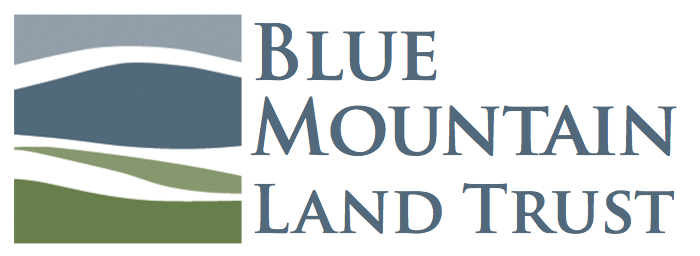If you’re like most people, you’ve probably never heard the term conservation easement. Or you may have, but you don’t really know what it means. We hope to provide you some clarity to the jargon we sometimes like to use.
The Blue Mountain Land Trust’s mission is to protect ranch and farm land and ecologically significant land in perpetuity. We do this primarily through conservation easements.
What is a conservation easement?
A conservation easement is a mutually-designed legal agreement between a landowner and a land trust or government agency that permanently limits uses of the land.
Here’s how it works. Every landowner starts with the ability to do whatever they want — anything within zoning regulations — to his or her property. They could subdivide, build a house and a barn, plant a vineyard, cut down trees.
When placing a conservation easement on their property, they still own the land but give up all, or a portion of, its development potential for the sake of protecting the history, biodiversity, or anything else that makes the land special. Since conservation easements are permanent, these restrictions are passed on to the new owner when the land is sold. This is the best way to ensure important lands are protected forever.
How do conservation easements affect land use?
No two properties are the same; that goes for conservation easements as well. Just as your property is different from your neighbors’, conservation easements address individual goals and the long-term vision of the landowner.
Most conservation easements contain some standard language, but each easement is written based on how the land is currently used, what already exists on the property, and what the landowner hopes to accomplish with the protection of his property.
Why should I limit my land use rights?
Since conservation easements are mutually-designed between landowners and the easement holder, the limitations placed on the property align with landowner’s vision for their property.
Conservation easements provide enormous benefits to our community, especially in our service area where over 66% of land is in private ownership.
When we look out at the rolling fields of wheat, expansive mountains, and acres of forest, we’re mostly seeing privately-owned properties. What you don’t see is that these private lands provide everything from fresh water to our municipalities, wildlife corridors for endangered species, and quality habitat for rare plants.
These are only a few reasons why landowners in the Blue Mountains and across the country are choosing to protect their land forever through conservation easements.

